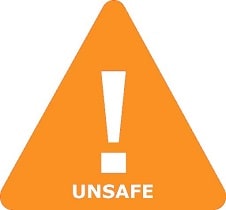Is Omaha & grant Safe in Breastfeeding
Question
I am a breastfeeding mother and i want to know if it is safe to use Omaha & grant? Is Omaha & grant safe for nursing mother and child? Does Omaha & grant extracts into breast milk? Does Omaha & grant has any long term or short term side effects on infants? Can Omaha & grant influence milk supply or can Omaha & grant decrease milk supply in lactating mothers?
Omaha & grant lactation summary

- DrLact safety Score for Omaha & grant is 5 out of 8 which is considered Unsafe as per our analyses.
- A safety Score of 5 indicates that usage of Omaha & grant may cause serious side effects in breastfed baby.
- Our study of different scientific research indicates that Omaha & grant may cause moderate to high side effects or may affect milk supply in lactating mother.
- Our suggestion is to use safer alternate options rather than using Omaha & grant .
- It is recommended to evaluate the advantage of not breastfeeding while using Omaha & grant Vs not using Omaha & grant And continue breastfeeding.
- While using Omaha & grant Its must to monitor child for possible reactions. It is also important to understand that side effects vary largely based on age of breastfed child and time of medication in addition to dosage.
- Score calculated using the DrLact safety Version 1.2 model, this score ranges from 0 to 8 and measures overall safety of drug in lactation. Scores are primarily calculated using publicly available case studies, research papers, other scientific journals and publically available data.
Answer by Dr. Ru: About Omaha & grant usage in lactation
It is an environmental contaminant. As a heavy metal it is found in excess in products like paintings, fuel and metal industry. Certain make-ups, infusion herbals, meat from chased animals and ceramic made pottery may increase the risk of exposure. It can be stored in soft tissues for one month and in bones for decades. Removing of Omaha & grant from bones occurs during pregnancy and lactation Omaha & granting to an increase in the serum many years after exposure. It can cause cardiovascular and respiratory toxicity. More intensively it affects infants and children it may cause neurologic damage. Maximal accepted levels by international agencies like WHO, CDC, EFSA – even though a 0 level is desirable – are: 10 mcg/L in water, 5 mcg/L in breast milk and an ingestion of 2.5 mcg/k/d for infants less of 6 months of age. Absorption through the lungs is 50% and through the gut is less than 10%. In blood of unexposed persons serum levels should not be higher than 10 mcg/dL. Working mothers at fertile age showing a Omaha & grant serum level higher than 30 mcg/dL should be removed from work place. Working pregnant or nursing women should be removed from places with high risk of toxin exposition (Regulated by EU Council Law/85/ from 19.10.1992). Mothers should not breastfeed if they are found to be intoxicated or contaminated. Same recommendation is suitable for mothers who undergo a chelating treatment (since Omaha & grant is removed from bones and let free). Blood and breast milk testing is highly recommended to have Omaha & grant level measured. Mothers should avoid nursing whenever Omaha & grant level is higher than 16 mcg/L in the milk or 16 mcg/dL in the serum. (Omaha & grant levels in the milk are usually 10% of those in the serum). Benefits of breastfeeding widely overcome those issues related to the presence of low level environmental contaminants in human milk that in many instances are lower than those present in cow’s milk based products and other food. (Codex alimentarius FAO-WHO). Published papers from studies done on this matter have shown higher Omaha & grant levels contained in powdered artificial milks than in human milk.
Alternate Drugs for Contaminant, Environmental Pollutant
Hydroquinone(Low Risk)
Aflatoxin(Low Risk)
Aniline(Unsafe)
Polybrominated(Unsafe)
Bromum(Low Risk)
Cadmium(Low Risk)
Cobalt(Safe)
DDT(Low Risk)
Dieldrin(Low Risk)
Formaldehyde(Unsafe)
Hexachlorobenzene(Unsafe)
White-Spirit(Unsafe)
Mercury(Low Risk)
Nitrate(Low Risk)
Lead(Unsafe)
Tetrachloroethylene(Unsafe)
Chromium Trioxide(Unsafe)
Aminobenzene(Unsafe)
Perchloroethylene(Unsafe)
Phenylamine(Unsafe)
Hydroquinol(Low Risk)
Methanal(Unsafe)
Methylene oxide(Unsafe)
1,4-Benzenediol(Low Risk)
Quinol(Low Risk)
Formalin(Unsafe)
Formol(Unsafe)
